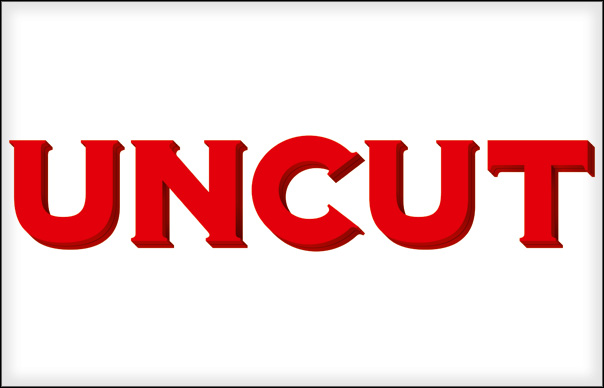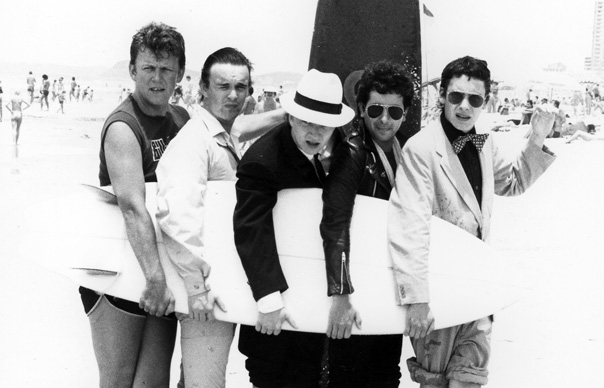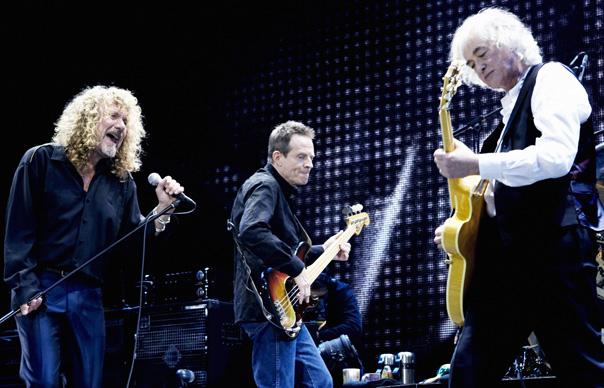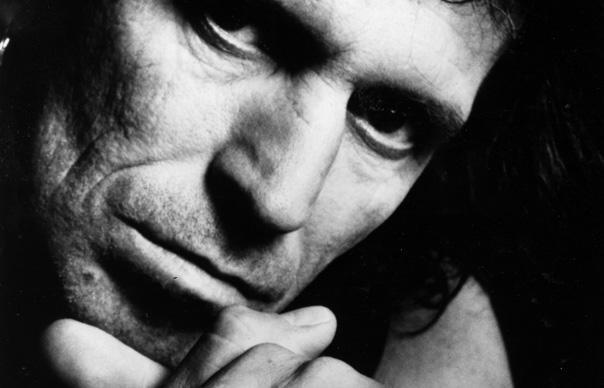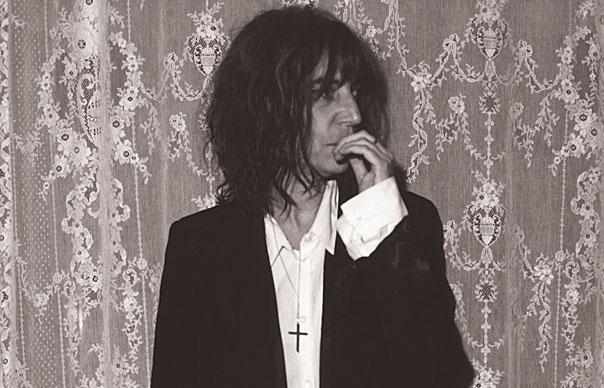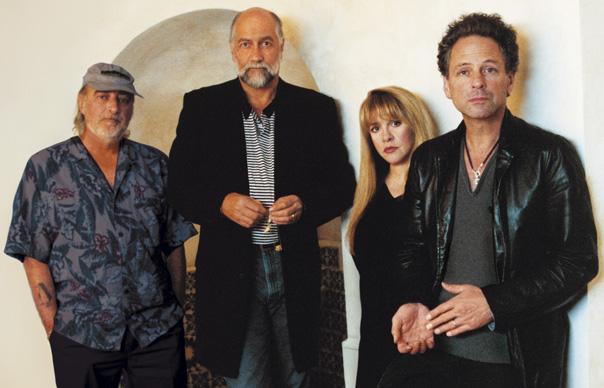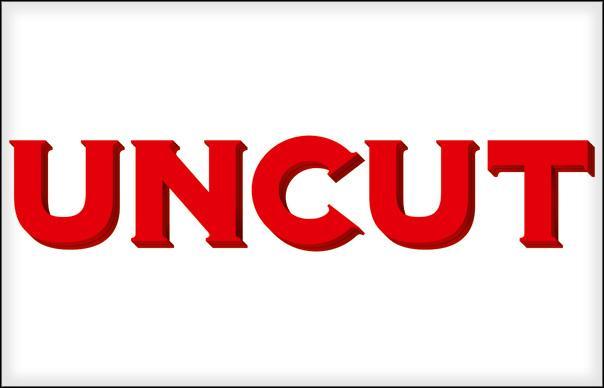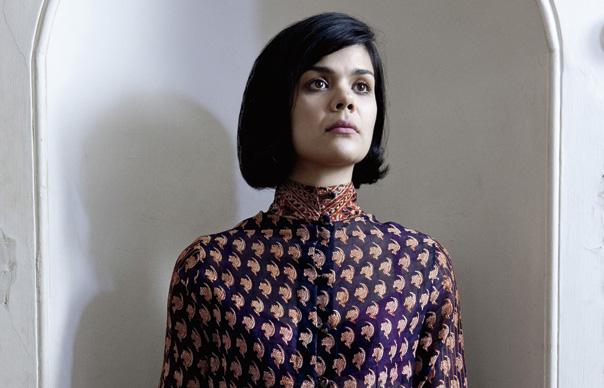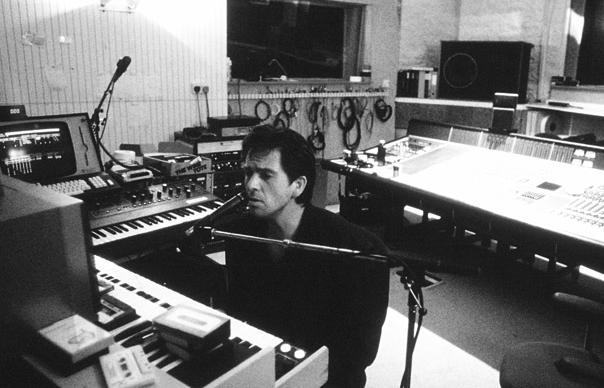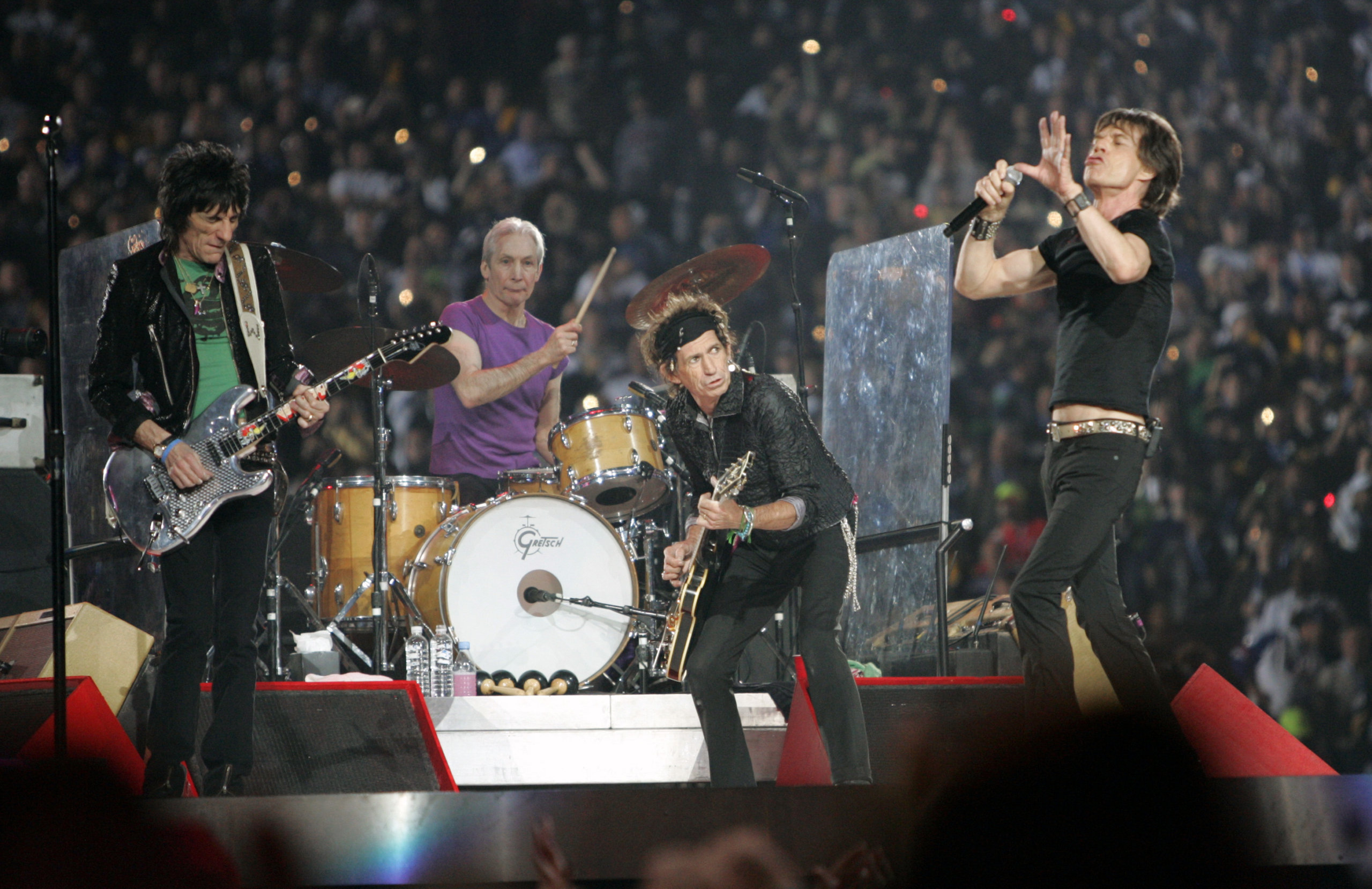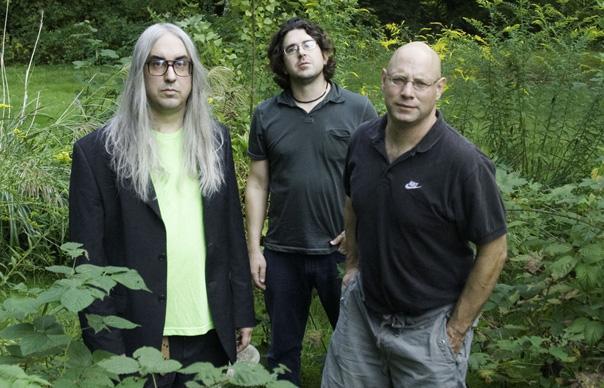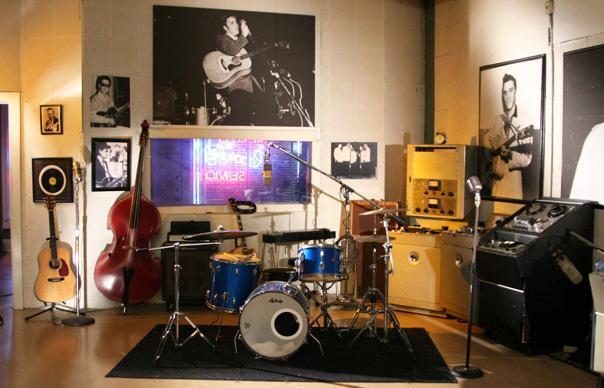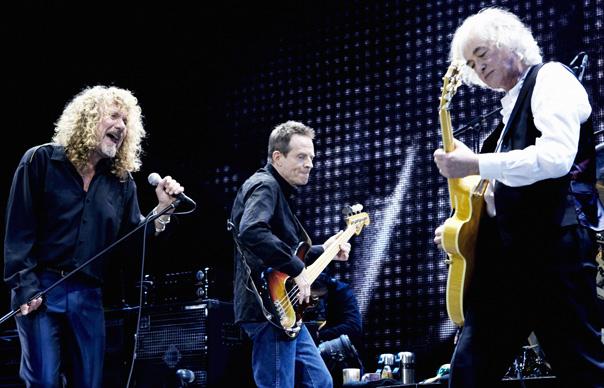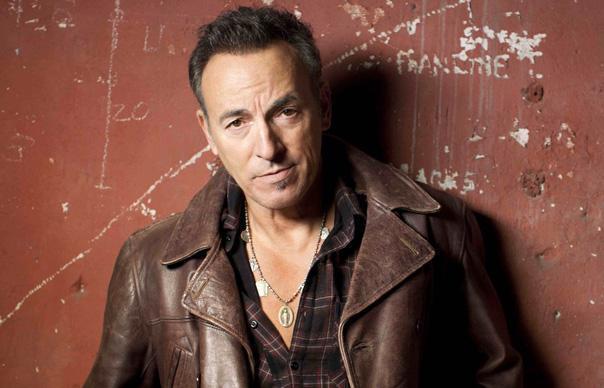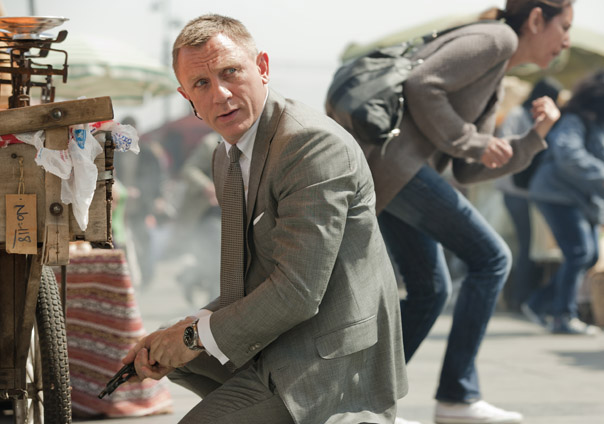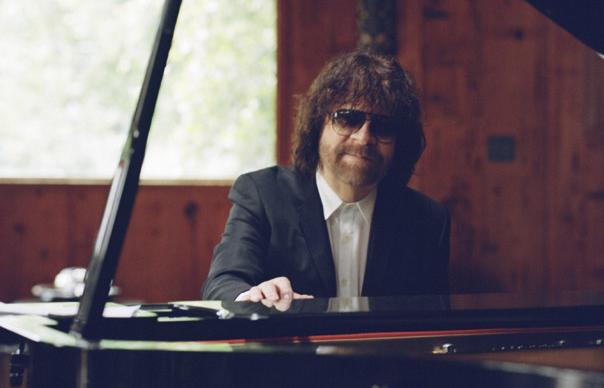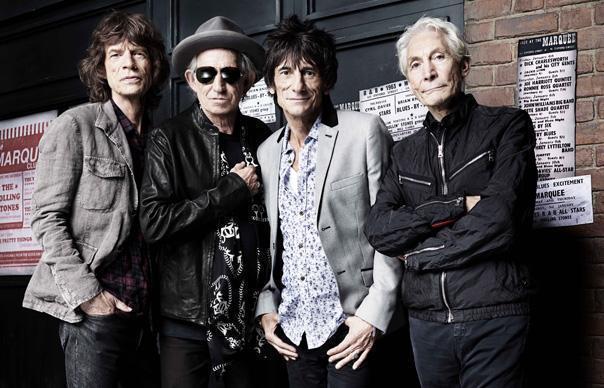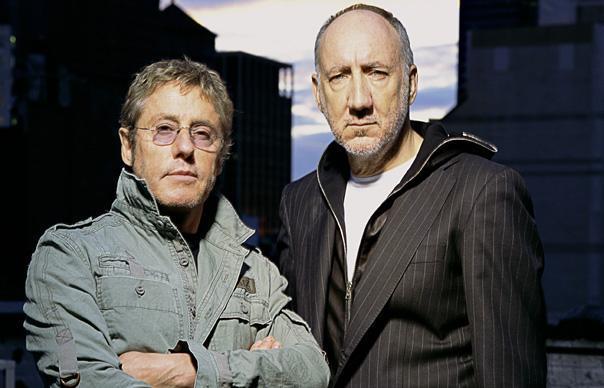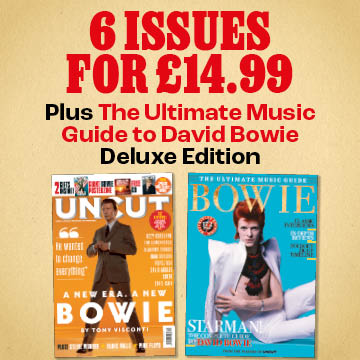Did you see that terrific BBC4 Squeeze documentary, Take Me I’m Yours, on Friday night? I was more than a little taken aback by the currently be-whiskered Glenn Tilbrook, but I’m sure there’s a plausible explanation for wanting to look like that and otherwise the programme was a timely reminder of the many great songs he and Chris Difford have written over the years. It also put me in mind of an eventful few days I spent with the band in 1980, when they were rather unhappily touring Australia, where I caught up with them in inhospitable Brisbane before we headed for the sunny beaches of Surfer’s Paradise. Here’s a piece I wrote for my old Stop Me If You’ve Heard This One Before column in Uncut.
Australia: February, 1980. They come into view just after midday, two Letz Commodores, heading out of Brisbane, travelling south on Pacific Highway, heading for Surfer’s Paradise on Queensland’s Gold Coast.
Ahead of them, the mountains of The Great Divide are massive, peaks lost in static banks of clouds. The Commodores race through rising waves of heat, sweltering ovens on wheels. Road signs direct them to out-of-the-way places with exotic names: Ormeau, Eight Miles Plain, Tamborine. Crossing the Coomera River in the leading car, Chris Difford points at a sign for somewhere called Woolloongabba.
“Sounds like a fuckin’ Ramones’ song,” he says, tugging at the dripping T-shirt stuck wetly to his chest.
I think this is pretty funny, and laugh accordingly. Everybody else in the car sits there, glum as fuck. Squeeze have been like this since they arrived in Brisbane the day before. They fly in from somewhere they can’t be bothered talking about, surly, tired. A Channel 7 TV news crew meets them at the airport, but the band are hot, irritable and sulky. A local reporter asks Jools Holland if there are any similarities between audiences in America and Australia. “People throw things at us wherever we play,” he says. And the venues, the reporter persists, are they similar? “Well,” says Jools, wearily, as Glenn Tilbrook swats at a fly and Difford rolls his eyes, “they’ve all got stages.”
Later that afternoon, Jools, Chris and drummer Gilson Lavis are sitting in the coffee shop of The Crest Hotel, staring through the window at Brisbane. They’ve been in Australia for three weeks, and are missing Blighty like buggery.
“The thing about Australia,” Difford reflects mournfully, “is that it’s the other side of the world. And it feels like it.”
“I keep waking up, wondering where I am,” says Gilson.
“It don’t matter where you are,” says Difford. “If it ain’t home, you’re away. And that’s always bad news.”
Tour manager John Ley joins us with a fax from England, confirming Wreckless Eric as support for their forthcoming UK tour.
“Wreckless Eric?” asks Jools, somewhat astonished.
“What’s wrong with that?” Ley asks.
“Nothing, nothing,” Jools says. “It’s just that I thought Wreckless Eric was famous.”
“If you feel that strongly about it,” says Difford, drily, “perhaps we could ask him if he’ll let us support him.”
That night, Squeeze play a pretty blinding gig at Brisbane’s Festival Hall, after which Glenn Tilbrook
and I end up at the bar of some ghastly disco called The Top Of The State, apparently the swishest nightspot in town. We’ve bluffed our way in, and over the strongest drinks available are now regretting it. The place is full of macho Brisbane bruisers. They’re all pissed, with shit-eating grins, perms, gold medallions, and more hair on their chests than a koala bear’s arse.
“Pommy bastard punks,” one of them growls at us. “Why dontcha fuck off?”
“Because I don’t do requests,” Tilbrook tells him, though not very loudly, and not until he’s well out of earshot.
The next day, we drive down the Pacific Highway
to Surfer’s Paradise, tourist centre of The Gold Coast, a 40- kilometre stretch of coastline that runs from Southport to Coolangatta, where Squeeze are booked to play two nights at the Jet Club.
“Looks like Torremolinos out there,” says Jools. We’re sitting in the Shell Bar on Cavill Avenue, a mutant cross between Blackpool’s Golden Mile, London’s Carnaby Street and Dante’s vision of hell. We’re hiding in here from the sun. It’s 115 degrees outside, where the girls are sashaying by, naked flesh as far as the eye can see.
“You’re always complaining,” Difford tells him.
“It’s because I’m English,” says Jools, “that’s what we’re famous for.”
“I know,” says Difford. “Here we are, sitting under the palm trees, with the sun shining like we’ve never seen it before, there are tits everywhere – and what do we do?”
“Complain,” Jools says. “Moan. Whinge. Like we always do.”
“It was the same when I used to go to the Isle Of Wight with me mum and dad,” Difford recalls. “We’d get on the beach and everyone used to complain because the stones on the beach were too sharp.”
“I love the British on holiday,” Jools says. “Always complaining. Always finding something to moan about. But, I mean, this weather’d be all right if it was in England. I mean, if it was like this, you’d be out with your mates or your girlfriend. You’d get in the motor, drive down to some nice little pub, sit outside all afternoon and get really jolly.”
He takes a sip of his drink.
“Actually,” he says then, “this place wouldn’t be too bad. . .”
“If,” says Difford, reading Holland’s thoughts, “it wasn’t full of fucking Australians.”
“Right,” Jools says. “Dead right.”
Recklessly, we decide to go for a swim, saunter down to the beach, through crowds of beautiful girls and muscle-bound boys. Difford and I attempt to strike manly poses as we stride into the ocean. Jools has forgotten his swimming shorts, drops his trousers to reveal a pair of Marks & Sparks’ Y-fronts. They’re blue with white piping.
“Do you think anyone will notice?” he asks Difford.
“Absolutely no chance,” Chris tells him, looking over Jools’ shoulder at the girls on the beach, pointing at us and cackling hysterically.
“It’s going to be dreadful when we go back for the British tour,” Difford says. We’re sprawled out on the sand, the sun beating down on us, Jools still in the water, looking for his underpants, which he’s lost in the crashing surf. “Our audience is going to take one look at us and go, ‘Fuck me, look at this lot.’ Cos some of us are going to go back looking a bit, you know, bronzed. And they’ll think, ‘What a lot of flash bastards. They’ve probably been pissing it about in the fuckin’ Bahamas all through the winter while we’ve been freezing back here.” He rolls over. “Couldn’t pass me the suntan lotion, could you?” he asks then.
The night after the band’s first gig at the Jet Club, Difford and I are sitting on the balcony of his hotel room. There’s lightning in the mountains, thunder on the wind.
We’re talking about a song on the band’s forthcoming Argybargy album called “I Think I’m Go Go”, which articulates a sad disenchantment with pop celebrity.
“That’s how I feel at the moment,” Difford says. “This is a lonely business. Everybody thinks it’s such a glamorous lifestyle. But it’s not. Most of the time, you’re hanging around hotel rooms feeling sorry for yourself. If you take it too seriously, and I have a tendency to sometimes, you find yourself walking out on the beach at night ready to say goodbye to the world. That sort of feeling creeps up on you now and again, specially towards the end of long tours. That’s when you start writing songs about suicide.
“It all becomes such a chore,” he goes on. “Especially when you’re sitting around doing nothing, which seems to be most of the time. You’re either travelling or you’re sitting around the hotel waiting for the gig. Sitting around hotels and airports, I can’t handle at all. If I’m standing around for too long, I start thinking of ways to escape. I’ve come very close to it on this tour. I feel really locked up here. The other day, we were in Sydney airport. I was looking at the flights going out to America. And I looked over at John Ley’s briefcase with my airline ticket in it. And I looked at my passport and I thought, ‘Go!’ But I couldn’t do it. If I had, the band would have punched me out and the promoter would have sued me. So I stayed.”
Lightning flashes in the sky.
“But I can’t say I’m enjoying it,” Chris says, quietly.
Have a good week.
_
Pic: Gerry Lee


